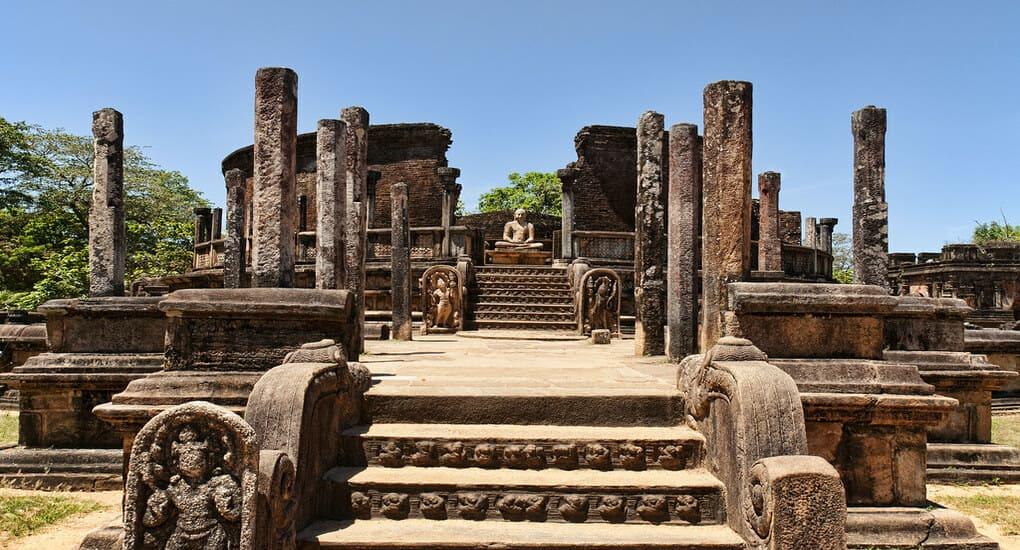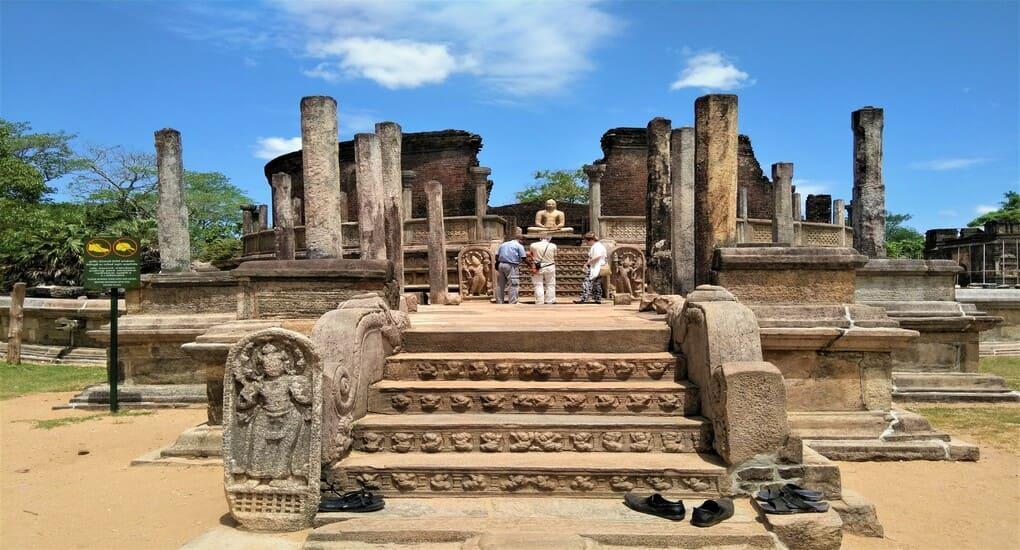Points of Interest - Polonnaruwa
Vatadage
Built by King Nishshankamalla (1187-1196), this ancient stupa house a remarkable stone carved Buddha statues in the centre and on the four corners. The entrance of the Stupa is decorated with 2 beautiful stone carved guard stones and a moonstone unique to Polonnaruwa era. Resulting number of south Indian invasions, the bull, worshiped in Hinduism, was removed from the moonstones that were found in Polonnaruwa. And the band with four animals was completely removed and lion, elephant and horse were depicted in separate bands.
The focal point of the ancient city of Polonnaruwa, the Dalada Maluwa which is the corridor of the Tooth Relic, was a holy area containing 12 glorious structures. Although there are various vatadage across Sri Lanka, the Vatadage at Polonnaruwa is the most well-known. Likewise with numerous other vatadage, it had a stupa inside with four Buddha pictures facing the cardinal directions.
The Vatadage is one of the oldest and most outstanding monuments in Polonnaruwa. Regardless of its modest proportions, the circular structure with its concentric terraces is a magnificently executed masterpiece in twelfth century. It was expected to house the Sacred Tooth Relic of Buddha, which is presently saved at The Sacred Temple of Tooth in Kandy. Worked by King Parakrambahu the great (1164-1196AD), it was later adorned by King Nissankamalla (1198-1206). The first terrace, which is the whole external structure is a gorgeous riot of artistry with pretty much every surface carved in a scuffle of enrichment. The outer wall is adorned with friezes of lions and midgets, and topped by an abstract of a lotus design.
The upper structure which is considered to be the second terrace consist of four entrances which are adorned with stone carvings such as the moonstones flanked by Nagaraja (Cobra king) figures with seven hooded cobra head guard stones.
While the Nagaraja figures were believed to forestall malicious spirits entering the premises, the moonstones elaborate semi-circular welcome step stones carved in polished granite-representing the profound journey from samsara, the endless pattern of death and resurrection, to Nirvana, the ultimate escape from suffering. These were extraordinary embellishing highlights of Sinhalese architecture. The moonstone at the northern entrance is the finest in Polonnaruwa.
From the upper terrace, steps lead through the four entrances, aligned in the cardinal directions and each directed by a seated Buddha. The vestiges of the small central brick stupa in which the Tooth Relic was enshrined during the magnificent days of ancient capital, Polonnaruwa are located in the center.
The structure has lost the cone shaped top of three concentric circles, a large portion of the dagoba (stupa) and one of its guard stones at the base of the steps among numerous other features and encompassing structures to the marauding Dravidian invaders from South India.


